Schismatoglottis Zoll. & Moritzi
Araceae
tropical and subtropical southeast Asia and southwest Pacific; the majority of rheophytesrheophyte:
(n) an aquatic plant that can live in fast-moving water currents
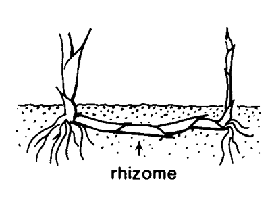 are endemicendemic:
are endemicendemic:
(adj) restricted to a certain geographical location
to areas of the southwest Pacific
Schismatoglottis ahmadii A.Hay
S. calyptrata (Roxb.) Zoll. & Moritzi
S. jepomii P.C.Boyce & S.Y.Wong
S. prietoi P. C. Boyce, Medecilo & S. Y. Wong [not currently accepted]
S. pusilla Engl.
S. roseospatha Bogner
information not available
information not available
small to medium amphibiousamphibious:
(adj) of a plant able to live on land or in water
, facultative, or obligate aroid
Clump-forming or solitary; rhizomatousrhizomatous:
(adj) possessing rhizomes
; stem typically condensed, erect or ascending. Leaves alternatealternate:
(adj) (of leaves) bearing one leaf per node; placed singly on the stem at different heights
 to spiral, basalbasal:
to spiral, basalbasal:
(adj) at or pertaining to the base, or point of attachment
or crowded on an elongated stem; petiolepetiole:
(n) the stalk of a leaf
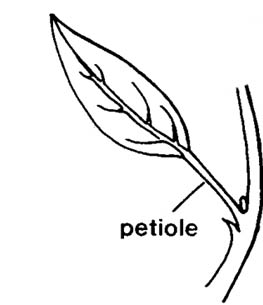 slender, usually glabrousglabrous:
slender, usually glabrousglabrous:
(adj) without hairs or scales
, base sheathing, may be subtended by cataphyllscataphyll:
(n) a reduced, small leaf resembling a scale
; leaf bladeblade:
(n) (syn. lamina) the flat, expanded part of a leaf, frond, or petal (excluding, e.g., the petiole)
 lanceolatelanceolate:
lanceolatelanceolate:
(adj) lance-shaped; widest point below the middle, tapering to the apex
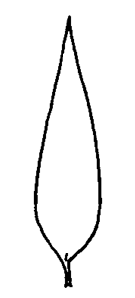 to ellipticelliptical:
to ellipticelliptical:
(adj) in the form of an ellipse (oval)
 , obovateobovate:
, obovateobovate:
(adj) ovate, with the narrow end at the base
 , or cordatecordate:
, or cordatecordate:
(adj) heart-shaped; in the form of two rounded lobes
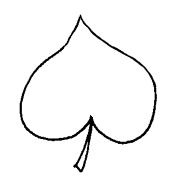 to sagittatesagittate:
to sagittatesagittate:
(adj) shaped like an arrowhead ; apexapex:
; apexapex:
(n) the point farthest from the point of attachment; the tip (often pointed)
acute to acuminateacuminate:
(adj) tapering gradually to a point and forming more or less concave sides
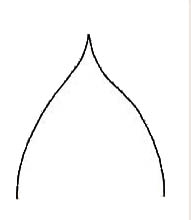 , ± with a tubulartubular:
, ± with a tubulartubular:
(adj) (of a corolla, perianth, calyx tube or other structure) (1) tube-shaped; cylindrical: narrow and elongate with more or less straight sides; (2) having segments fused into a tube (of any shape)
mucromucro:
(n) a short, sharp, abrupt point
; base cuneatecuneate:
(adj) wedge-shaped; triangular, with narrow end at the base
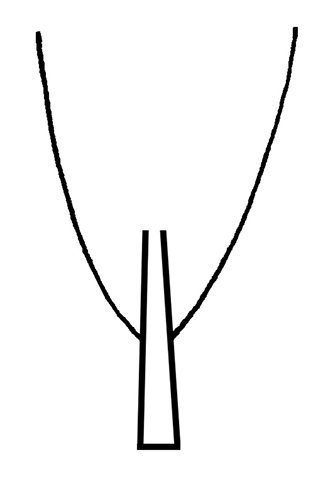 to slightly decurrentdecurrent:
to slightly decurrentdecurrent:
(adj) extending downward, beyond the point of insertion
; venationvenation:
(n) the arrangement of veins in a leaf
pinnate with marginal collective vein or midribmidrib:
(n) the main or central vein, line or rib in a leaf or perianth segment
 only; green adaxially, paler abaxially, sometimes variegated. Inflorescenceinflorescence:
only; green adaxially, paler abaxially, sometimes variegated. Inflorescenceinflorescence:
(n) the arrangement of flowers on the floral axis
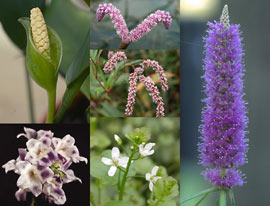 an axillaryaxillary:
an axillaryaxillary:
(adj) in, of, or produced from an axil
spathespathe:
(n) a large bract or bracts subtending and often enclosing an inflorescence
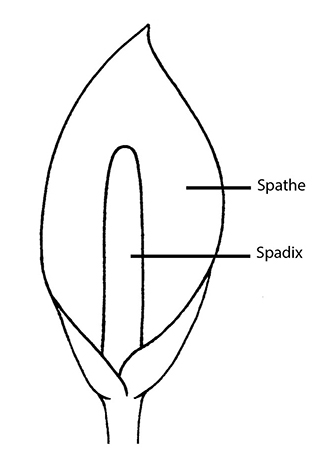 and spadixspadix:
and spadixspadix:
(n) a spike of small flowers borne on a thick, fleshy axis
 , solitary or up to 8 together; pedunclepeduncle:
, solitary or up to 8 together; pedunclepeduncle:
(n) the stalk of a flower cluster or inflorescence
shorter than petioles, subtended by cataphyllscataphyll:
(n) a reduced, small leaf resembling a scale
; often malodorous. Spathespathe:
(n) a large bract or bracts subtending and often enclosing an inflorescence
 basally subcylindric; lower spathespathe:
basally subcylindric; lower spathespathe:
(n) a large bract or bracts subtending and often enclosing an inflorescence
 narrowly ovoidovoid:
narrowly ovoidovoid:
(adj) egg-shaped in three dimensions
, constricted below limblimb:
(n) the expanded portion of a petal or bract (e.g., a spathe)
, persistentpersistent:
(adj) (of leaves etc,) remaining attached; not being dropped or falling off
, green, occasionally flushed pale pink; limblimb:
(n) the expanded portion of a petal or bract (e.g., a spathe)
lanceolate to ovateovate:
(adj) egg-shaped in outline; generally with the broad end at or near the base
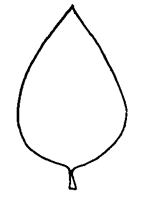 , apexapex:
, apexapex:
(n) the point farthest from the point of attachment; the tip (often pointed)
acuminate and mucronatemucronate:
(adj) tipped with a mucro
, usually gaping at anthesisanthesis:
(n) the period from flower opening to fruit set
, then caducouscaducous:
(adj) falling off easily or at an early stage
, cream to white, greenish or red. Infructescence of oblongoblong:
(adj) two to four times longer than wide, with +/- parallel sides
 to globoseglobose:
to globoseglobose:
(adj) spherical or nearly so
berries; seeds few to many, ellipsoid.
tropical humid forests; forest floor, in inundated or shallow fast-flowing freshwater of rivers and streams, often on rocks
Schismatoglottis consists of about 100 species, the majority of which are terrestrialterrestrial:
(adj) growing on land as opposed to living in water
in tropical habitats while some are amphibiousamphibious:
(adj) of a plant able to live on land or in water
to rheophyticrheophytic:
(adj) living or able to live in fast-moving water currents
. None are truly aquatic. Cultivated species are used in terrariums, vivariums, paludariumspaludarium:
(n) type of vivarium (aquariam, terrarium) that incluces both terrestrial and aquatic organisms
 , and aquariums.
, and aquariums.